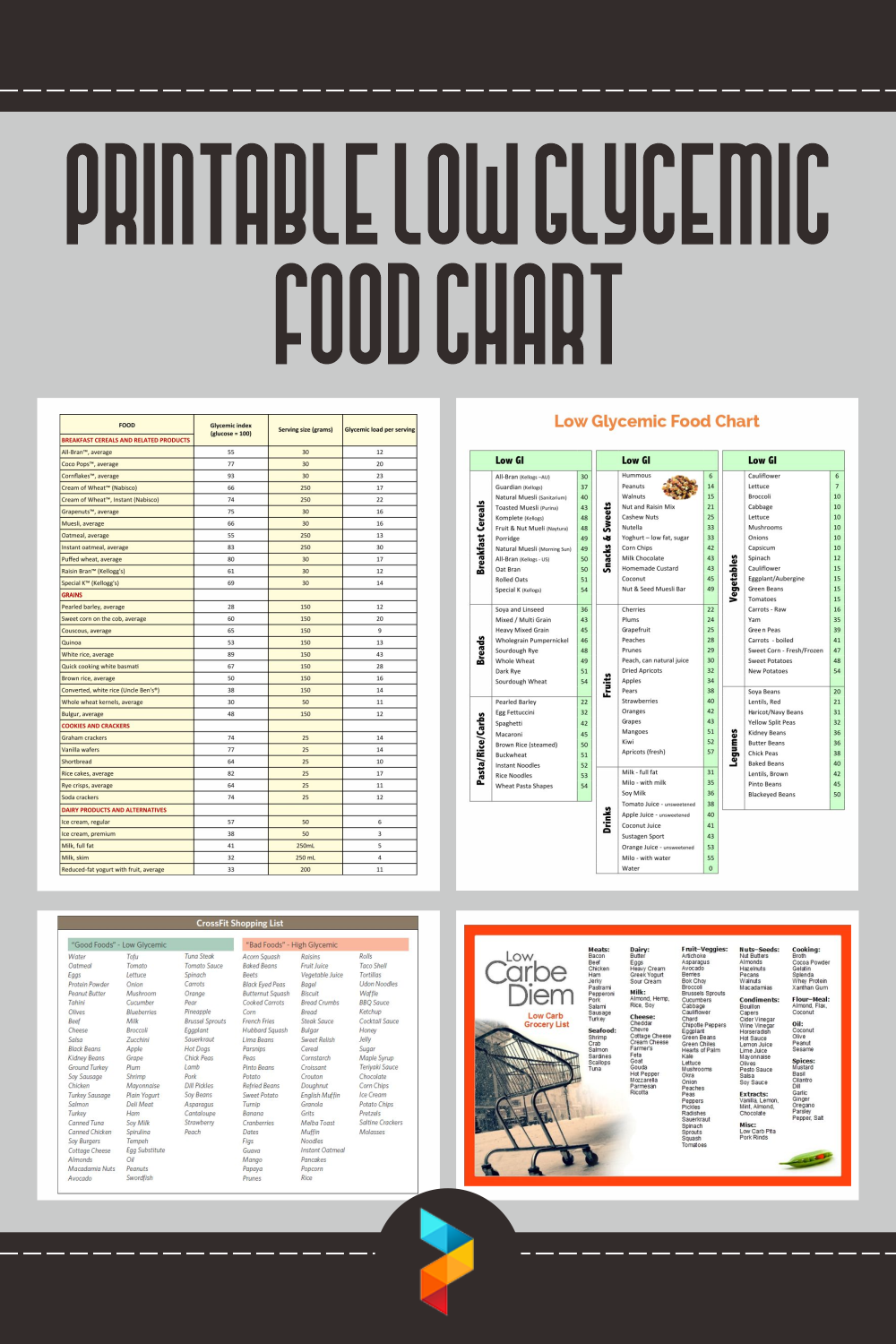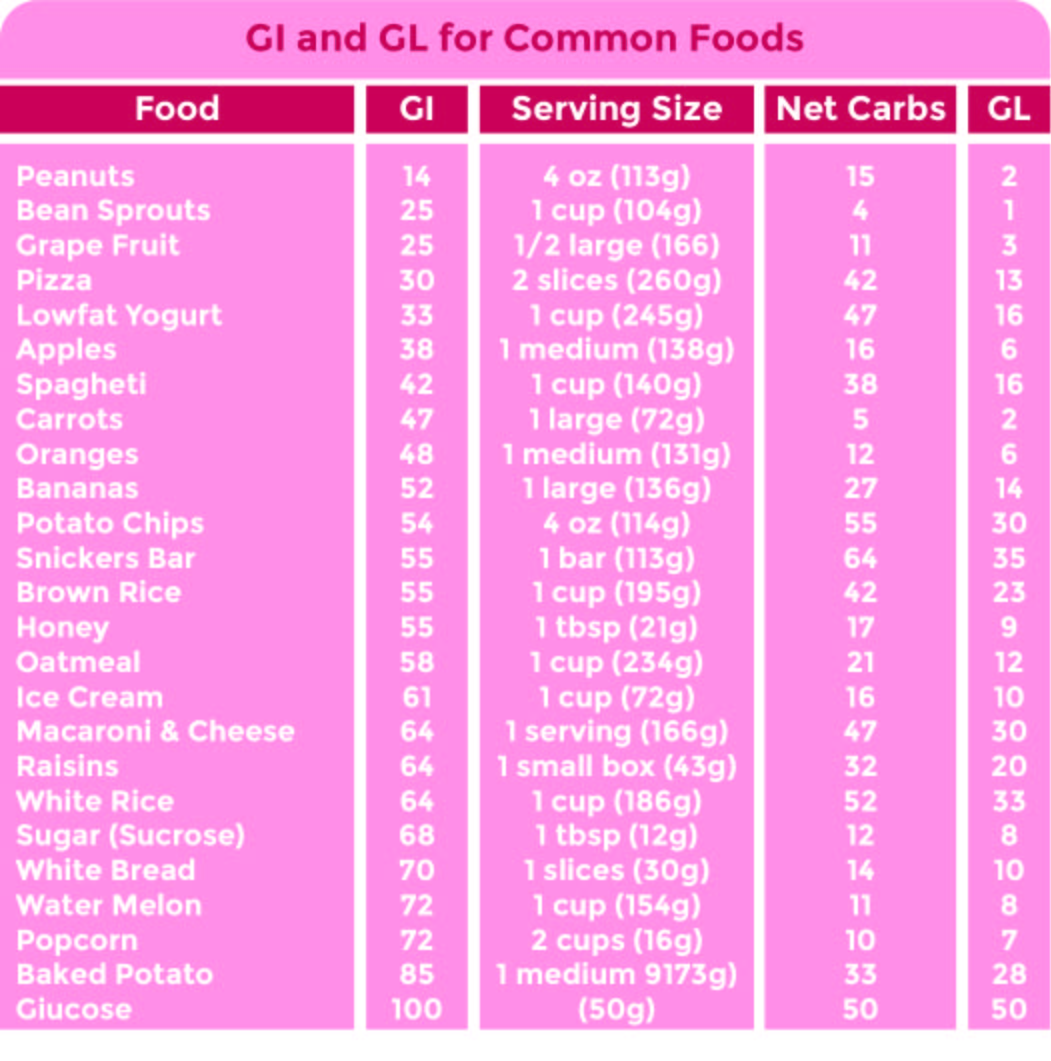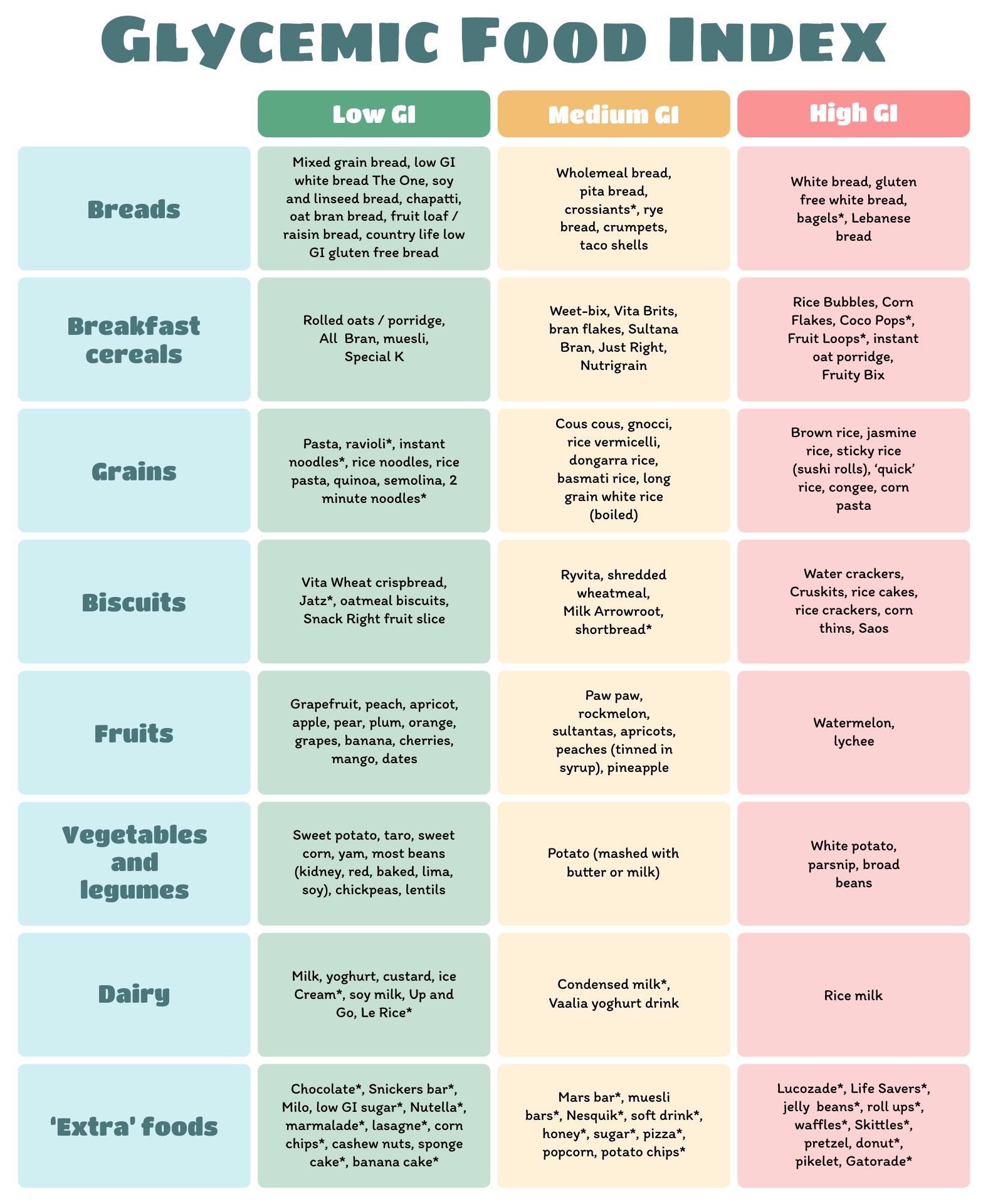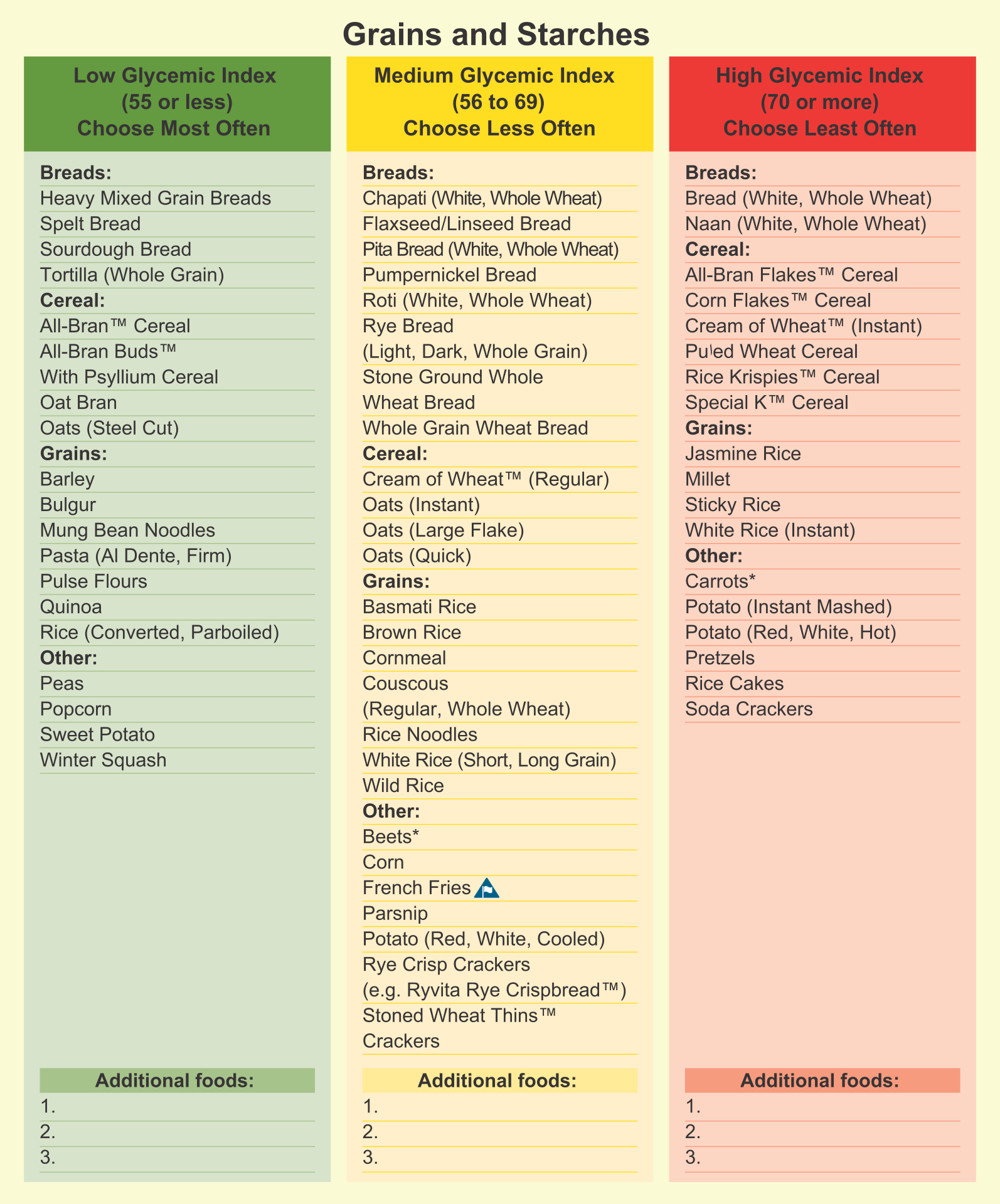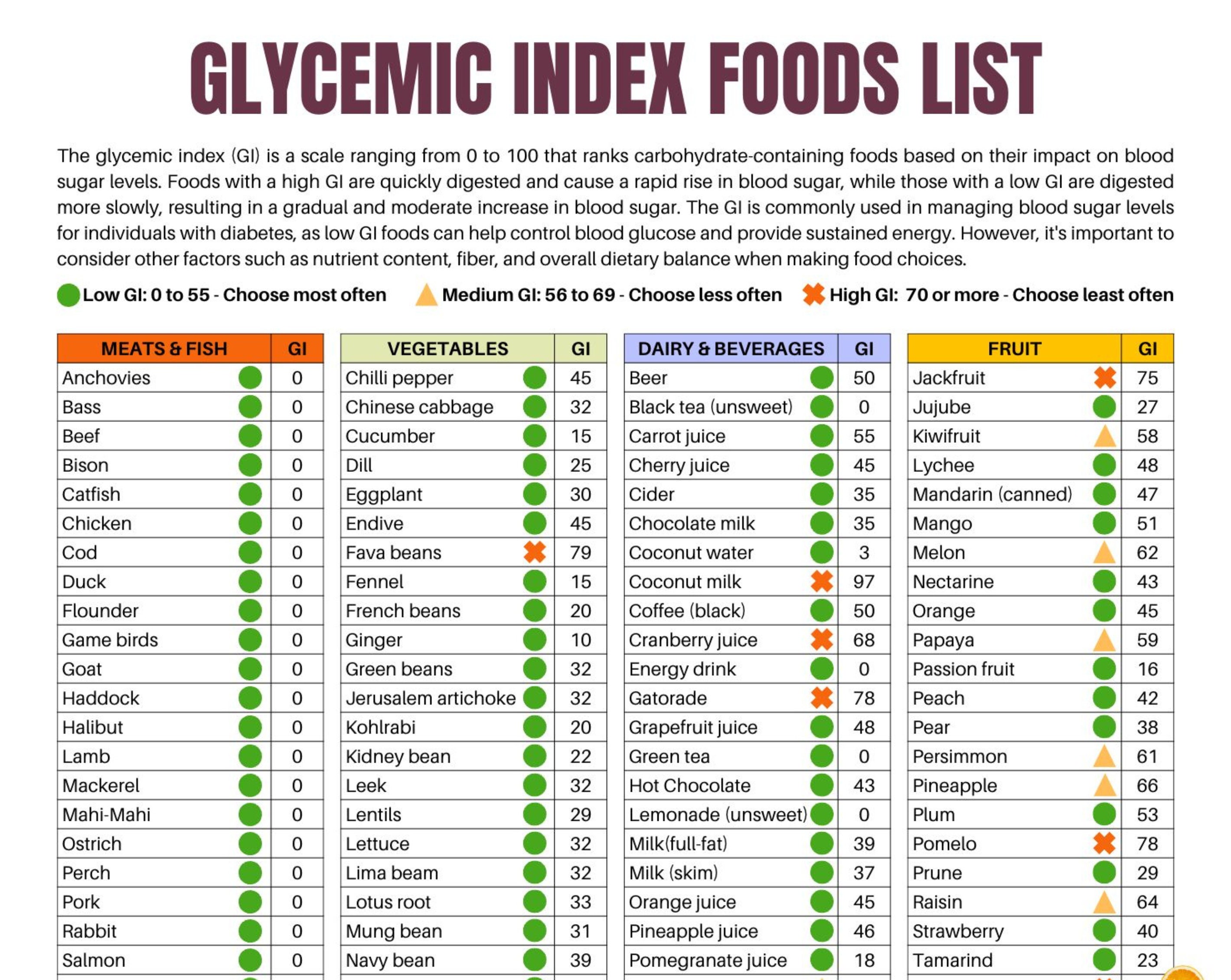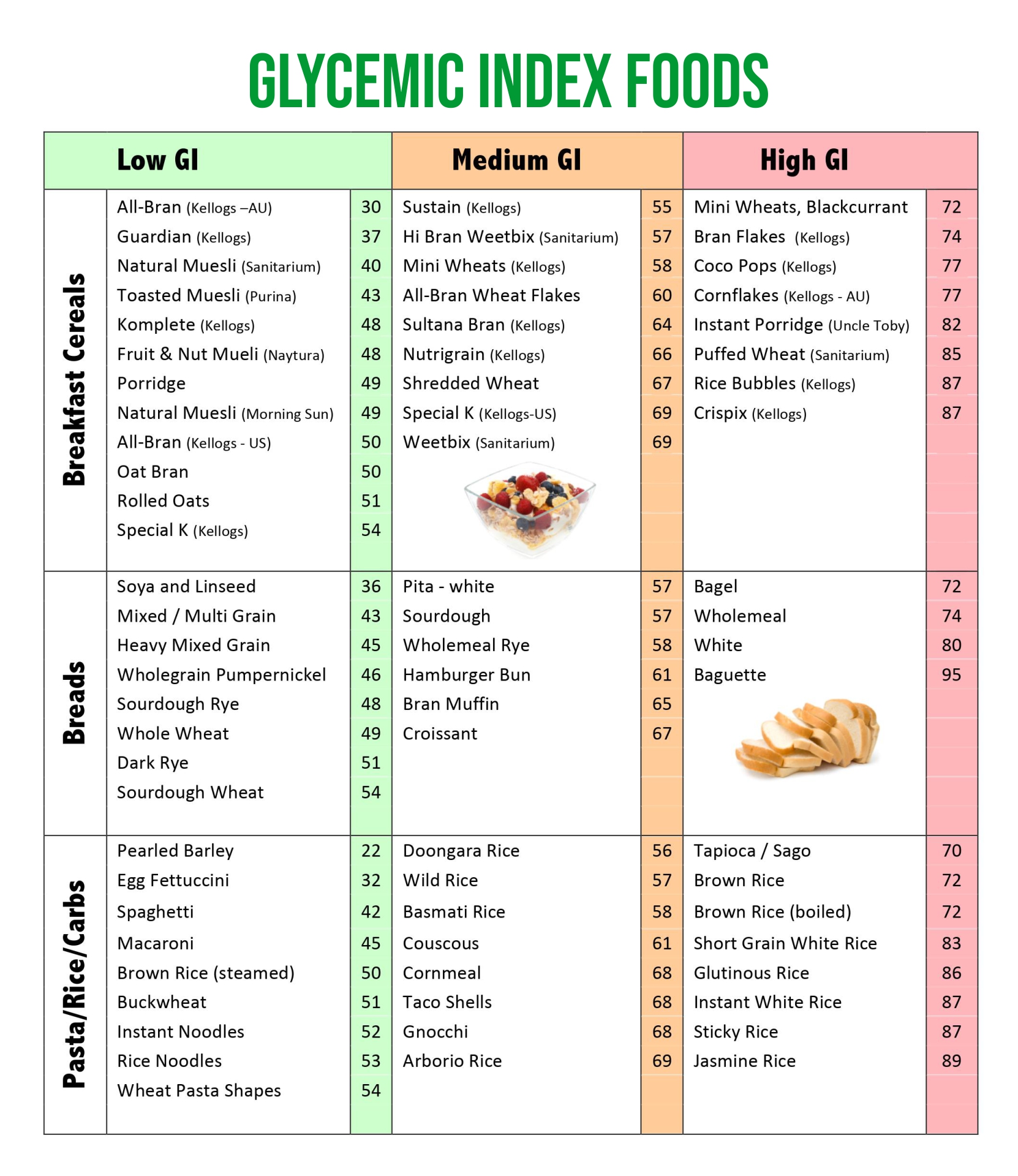Glycemic Index Of Foods Printable Chart
Glycemic Index Of Foods Printable Chart - Web glycemic index chart. Web the glycemic index is a value assigned to foods based on how quickly and how high those foods cause increases in blood glucose levels. Web the glycemic index is a great measure of how much a certain food will effect your insulin levels. Low glycemic index (55 or less) skim. Foods low on the glycemic index (gi) scale tend to release glucose slowly and steadily. Web what is glycemic index? Foods low on the glycemic index (gi) scale tend to cause a slow, steady rise in blood sugar. Foods with higher glycemic index values are at the top of the table, while foods with lower glycemic index values are at the end of the table. Gl is the measure of the blood sugar. The glycemic index of a food refers to the effect the food has on the body’s blood sugar levels. Web this page provides a comprehensive gi index chart and their corresponding glycemic index and glycemic load values for easy reference. This article explains the glycemic index and how it works. A food’s gi is expressed as a number between 0 and 100. Web below you will find a printable glycemic index chart in pdf format, featuring over 100 different foods and their corresponding gi values. >70 = high glycemic index. Web the following table provides the glycemic index (gi) and glycemic load (gl) values of selected foods. Foods low on the glycemic index (gi) scale tend to release glucose slowly and steadily. Complete up to date table of glycemic index values collected from all available studies. Understanding the gi values of specific foods can help reduce harmful spikes in blood sugar, as sugars and carbohydrates are broken down and your metabolism releases insulin to aid in digestion. Web below are the measurements for glycemic index: Web what is glycemic index? A food’s gi is expressed as a number between 0 and 100. Web to help you understand how the foods you are eating might impact your blood glucose level, here is an abbreviated chart of the glycemic index and glycemic load, per serving, for more than 100 common foods. Gi chart for 600+ common foods. But, with information scattered everywhere, hard to keep track. Foods are categorized as low gi (55 or less), medium gi (56 to 69) and high gi (70 or more). It is a sign of the quality of carbohydrates in the food. Web below are the measurements for glycemic index: Web this page provides a comprehensive gi index chart and their. There are three gi categories: The glycemic index chart below uses a scale of 1 to 100 for glycemic index and 1 to 50 for glycemic load values, glucose having the highest gi value of 100 and gl of 50. A low gi is a sign of better quality. Web the glycemic index is a value assigned to foods based. The glycemic index charts below lists common foods followed by their serving size and glycemic index number, according to the gi database compiled by the university of sydney and cited by the usda. Understanding the gi values of specific foods can help reduce harmful spikes in blood sugar, as sugars and carbohydrates are broken down and your metabolism releases insulin. A food’s gi is expressed as a number between 0 and 100. Gl is the measure of the blood sugar. Eating foods with a lower gi may result in a more gradual rise in your blood sugar level. This is a function of the type and. Web this page provides a comprehensive gi index chart and their corresponding glycemic index. Web the glycemic index (gi) is a measure of how fast a food raises the blood sugar level. Low glycemic foods slow down sugar absorption, helping in maintaining stable glucose levels. But, with information scattered everywhere, hard to keep track. Foods with a higher gi value are more likely to spike your blood sugar than foods with a lower gi.. They are grouped according to range and food type. It is a sign of the quality of carbohydrates in the food. There are three gi categories: Complete up to date table of glycemic index values collected from all available studies. Web this page provides a comprehensive gi index chart and their corresponding glycemic index and glycemic load values for easy. Foods are assigned a value based on the food eaten by itself, without the influence of other foods. Web below are the measurements for glycemic index: The glycemic index of a food refers to the effect the food has on the body’s blood sugar levels. Making healthy food choices gets tricky with all the options. Foods with higher glycemic index. Foods low on the glycemic index (gi) scale tend to cause a slow, steady rise in blood sugar. Foods are categorized as low gi (55 or less), medium gi (56 to 69) and high gi (70 or more). There are three gi categories: Folks trying to manage blood sugar, lose weight, or just aiming for a healthier diet often find. Foods low on the glycemic index (gi) scale tend to release glucose slowly and steadily. Web to help you understand how the foods you are eating might impact your blood glucose level, here is an abbreviated chart of the glycemic index and glycemic load, per serving, for more than 100 common foods. Low glycemic index (55 or less) skim. Gi. Gl is the measure of the blood sugar. Complete up to date table of glycemic index values collected from all available studies. But, with information scattered everywhere, hard to keep track. The glycemic index charts below lists common foods followed by their serving size and glycemic index number, according to the gi database compiled by the university of sydney and cited by the usda. They are grouped according to range and food type. Web the following table provides the glycemic index (gi) and glycemic load (gl) values of selected foods. We have put together a glycemic index food chart. A food’s gi is expressed as a number between 0 and 100. Web this page provides a comprehensive gi index chart and their corresponding glycemic index and glycemic load values for easy reference. Folks trying to manage blood sugar, lose weight, or just aiming for a healthier diet often find navigating food choices tricky. There are three gi categories: Foods are categorized as low gi (55 or less), medium gi (56 to 69) and high gi (70 or more). Foods low on the glycemic index (gi) scale tend to release glucose slowly and steadily. Eating foods with a lower gi may result in a more gradual rise in your blood sugar level. Blood sugar levels are raised after a person eats foods containing carbohydrates (sugars and starches). Foods high on the glycemic index release glucose rapidly.Full Glycemic Index Food List Printable Chart
Printable Glycemic Index Food List
Gratis Glycemic Index Food List Chart
Low Glycemic Food Chart 20 Free PDF Printables Printablee
Printable Pdf Printable Glycemic Index Chart
Full Glycemic Index Food List Printable Chart
Glycemic Index Food Chart Printable Pdf
Glycemic Index Printable Chart
Glycemic Index Food Chart Free Download
Printable Pdf Printable Glycemic Index Chart
Web The Glycemic Index (Gi) Is A Measure Of How Fast A Food Raises The Blood Sugar Level.
It Is A Sign Of The Quality Of Carbohydrates In The Food.
Low Glycemic Foods Slow Down Sugar Absorption, Helping In Maintaining Stable Glucose Levels.
Understanding The Gi Values Of Specific Foods Can Help Reduce Harmful Spikes In Blood Sugar, As Sugars And Carbohydrates Are Broken Down And Your Metabolism Releases Insulin To Aid In Digestion.
Related Post:
